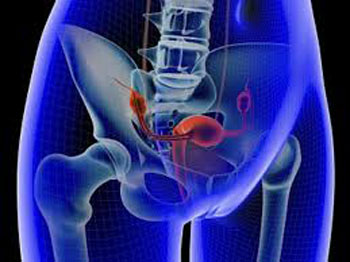IMRT Causes Fewer Bowel and Bladder Problems in Women
By MedImaging International staff writers
Posted on 20 Oct 2016
Researchers at Yonsei University (Seoul, South Korea), the University of Texas MD Anderson Cancer Center (Houston, USA), and other institutions conducted a multi-center, international study to assess the impact of IMRT, as compared to standard four-field radiation therapy (RT), in 278 patients with cervical or endometrial cancer who received pelvic RT post-operatively at cancer centers in the United States, Canada, Japan, and Korea. Patients were randomly assigned to receive standard RT or IMRT.Posted on 20 Oct 2016
The patients were evaluated during the RT treatments via multiple patient questionnaires in order to determine acute toxicities in the GI and GU systems, as well as patient quality-of-life (QOL). The patients were stratified based upon RT dose (45 Gy or 50.4 Gy), use of chemotherapy (no chemotherapy or five cycles of weekly cisplatin at 40 mg/m2), and disease site. The researchers then compared changes in average scores on the questionnaires from baseline to five weeks following RT start, using two-way t-tests.

Image: According to a new study, women with cervical and endometrial cancer have fewer gastrointestinal (GI) and genitourinary (GU) side effects when treated with intensity-modulated radiation therapy (IMRT) (Photo courtesy of ASTRO).
The results showed that women in the IMRT arm experienced significantly fewer bowel-related toxicity than patients who received standard RT, as indicated by smaller average declines in their Expanded Prostate Cancer Index Composite (EPIC) bowel domain scores. Analysis of sub-scales within the EPIC determined that IMRT patients experienced less severe declines in bowel function, but not bowel bother. IMRT patients also experienced fewer high-level adverse events following treatment, including diarrhea.
Urinary side effects at five weeks from treatment were less prevalent among patients who received IMRT, as indicated by significantly smaller declines in average EPIC urinary domain scores for the IMRT arm. Furthermore, outcome index scores demonstrated fewer declines in health-related QOL following IMRT compared to standard RT. Patients treated with IMRT also had less change in physical wellbeing and additional concerns. The study was presented at the annual meeting of the American Society for Radiation Oncology (ASTRO), held during September 2016 in Boston (MA, USA).
“Many radiation oncologists already use IMRT for women undergoing pelvic radiation, but this research provides data that using IMRT, which is a more resource-intensive treatment, makes a real difference to patients receiving radiation therapy to the pelvic area,” said lead author professor Ann Klopp, MD, PhD, of the MD Anderson Cancer Center. “When performed by an experienced radiation oncology team, IMRT reduces the risk of short-term bowel and bladder side effects for patients with endometrial and cervical cancer.”
IMRT uses advanced technology to manipulate photon and proton beams so that they conform to the shape of a tumor. The radiation intensity of each beam is controlled, and the beam shape changes throughout each treatment, with the goal of adapting the radiation dose to the target and to avoid or reduce exposure of healthy tissue in order to limit the side effects of treatment.
Related Links:
Yonsei University
University of Texas MD Anderson Cancer Center














